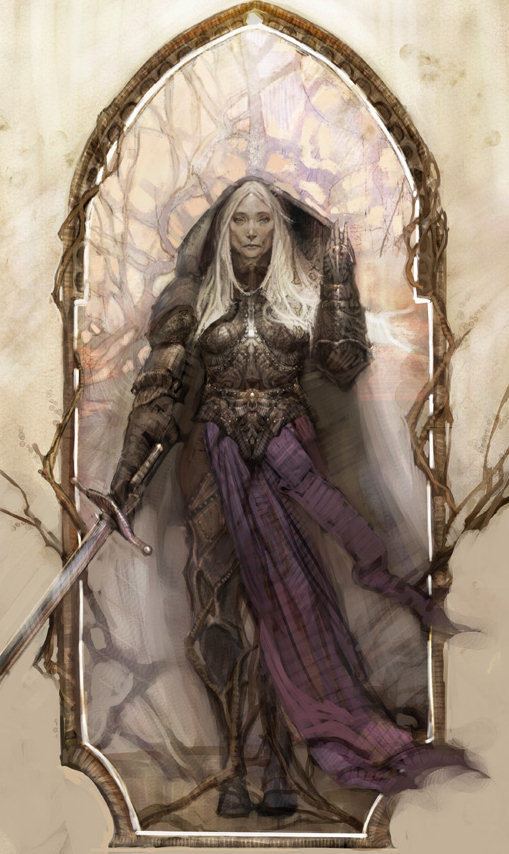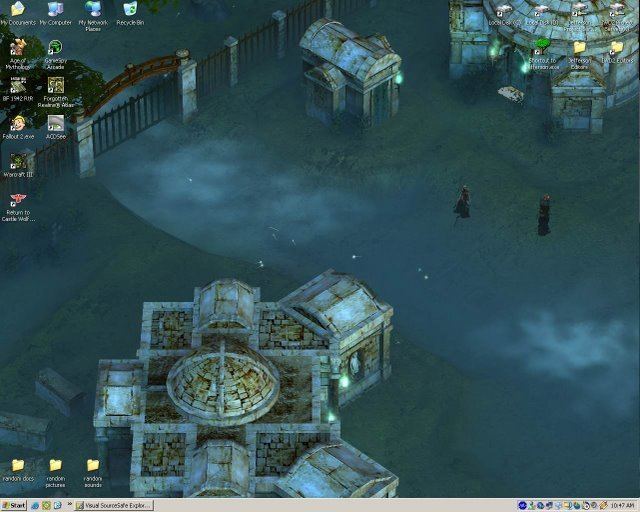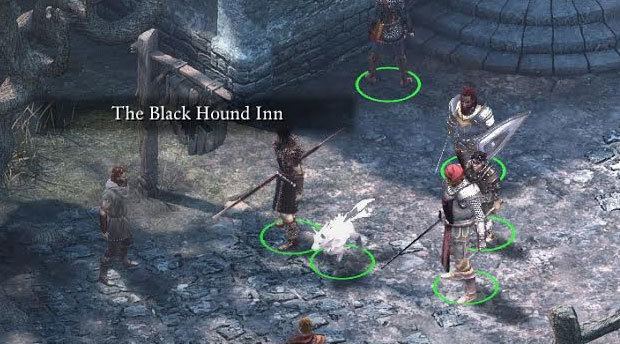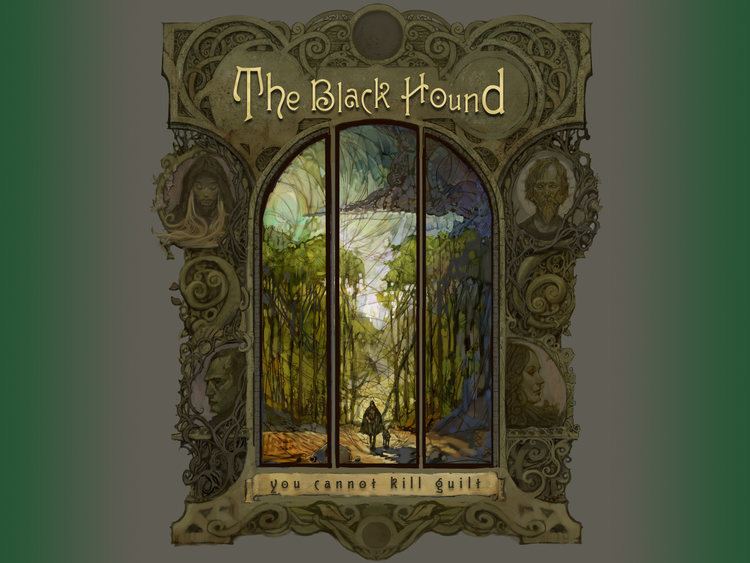Release date(s) Cancelled | Mode(s) Single-player Series Baldur's Gate | |
 | ||
Similar Baldur's Gate games, Interplay Entertainment games, Role-playing video games | ||
Pillars of eternity preview wqhd 001 baldur s gate 3 let s play pillars of eternity
Baldur's Gate III: The Black Hound was to be the third entry in the Dungeons & Dragons Baldur's Gate series, as the sequel to Baldur's Gate II: Shadows of Amn and Baldur's Gate II: Throne of Bhaal. It was to be developed by Black Isle Studios, going by the codenames FR6 and Project Jefferson. The game was announced in 2002 and was said to use the D&D 3rd Edition ruleset. The game was set to use a new 3D engine based on BioWare's Aurora Engine, itself a successor to the Infinity Engine used for the first two Baldur's Gate games.
Contents
- Pillars of eternity preview wqhd 001 baldur s gate 3 let s play pillars of eternity
- Pillars of eternity review test so klasse ist das inoffizielle baldur s gate 3
- Setting
- Characters
- Story
- Game dynamics
- Progression
- Karma
- Party
- Reputation
- Development
- Jefferson Engine
- Trilogy
- References

The game appeared to have been cancelled in 2003, though Interplay made no such announcement, when its engine was announced to have been used for Black Isle Studios Van Buren. However, with Van Buren's cancellation, the Jefferson engine was never used for any game. The game's motto would have been: "You cannot kill guilt".
Rumors on the development of The Black Hound continued up until 2012 upon the announcement of Baldur's Gate: Enhanced Edition. The developers, Beamdog, revealed that they planned on making Baldur's Gate III, but did not initially reveal whether it would be a continuation of The Black Hound. Beamdog would later clarify that a possible Baldur's Gate III would not be based on The Black Hound and instead be an original story.
Pillars of eternity review test so klasse ist das inoffizielle baldur s gate 3
Setting

The game was set to take place in the fictional Forgotten Realms continent of Faerûn. It would have been set in the Dalelands and allowed players to travel mostly in the area of Archendale. Players would have also been able to travel to key areas in Archendale such as the White Ford, the Church of Lathander and bases of the Red Wizards of Thay. Other areas in the Dalelands featured would have been Battledale, Deepingdale as well as an area of North Sembia. Though it is possible that Baldur's Gate would have appeared in the game as well in a cameo appearance, this remains unconfirmed and highly unlikely.
Characters

None of the characters from the previous Baldur's Gate games would have returned, the cast would have been completely original as well as the story, although characters from the Icewind Dale series would have returned. The reason for this is Icewind Dale was released after Interplay lost the initial D&D license. An original NPC would have been Stellaga Brightstar, a priestess in the Church of Lathander. The game would have revolved around the hunt for May Farrow, the evil cleric who killed a black hound. The Black Hound was the representation of the selfish acts of the game's main antagonist and would appear to the player through circumstance and remind him of his actions throughout the game.

The main faction in the game would have been the Archenriders, who are also the first faction encountered by the player, the Church of Lathander would have been a faction at the same importance. The Red Wizards of Thay, the Sembian Silver Ravens, the Malarite People of Black Blood and the Elves of Deepingdale would have been other major factions in the game that the player would have been allowed to side with. The characters from Icewind Dale that would have come would have been the gnome, Maralie Fiddlebender and the Druid, Iselore who would have appeared in a cameo. The Harpers and the Zhentarim would have also appeared. The Zhentarim would have been seen for part of the game as the Black Network.
Story
May Farrow and her gang of raiders have spent weeks tracking down the black hound, the essence of May's guilt for unleashing a great evil. The player character is resting by the firelight in an old barn to hide from the storm outside when a black hound arrives and after being shot twice by an arrow, it cries one last time before it dies on the player lap. May almost kills the player, accusing him of being in league with the dog (meaning she thinks the player character is another essence of her guilt) and almost kills the player character (PC) before the Riders of Archendale save the PC. They question the PC, take the PC to the magistrate, who question the PC further and inform the PC not to leave the areas of North Sembia, Archendale, Battledale and Deepingdale. Whenever the player then approaches somebody with great guilt, the black hound appears to him and eventually the players actions make the player the essence of guilt throughout the four areas mentioned above. As the player unravels more secrets, he learns that he can't kill guilt, thus he cannot kill the black hound or what he has become (the player can physically die, but people won't forget about what the player did). Eventually, he learns the tale of a widowed farmer's wife, taking great guilt in her husband's death as for some reason she believes it is her fault, she tries to resurrect him. She succeeds but finds him to be an abomination and cannot stop him, despite him being very weak at the time. Through the course of the game, the farmer is growing stronger and stronger off the guilt absorbed by the black hound through the player. The player learns of this wife being May Farrow, who believes killing the hound would be a way to stop the farmer, the hound however latched its soul onto the player and uses him as a tunnel to channel guilt to the farmer and as a guide to the world.
The game would not have been a sequel to Baldur's Gate II in terms of story but rather gameplay, however, it did continue part of story of Icewind Dale II through joinable NPC's, specifically Maralie Fiddlebender, who would have been an adult in the story. There was a hound featured in the storybook of Icewind Dale II of which Maralie narrated, according to the developers, the game would have revolved around this hound. The game was also revealed to have a connection to another one of Black Isle Studios games, Project Jackson. Project Jackson was then revealed to be Baldur's Gate: Dark Alliance II. This connection was unknown and as of current, there is only one connection known: a Forgotten Realms setting. It is possible that there could be a story connection due to both the Harpers and the Zhentarim being in the game, but this was never revealed by any developer on the project. It was only stated that the projects were related once in the entire history of the project.
Game dynamics
As revealed in several interviews, but most prominently in the one with Winterwind Productions, the gameplay of the game was revealed. It would have used the same gameplay as the previous Baldur's Gate games, just updated to fit the Dungeons & Dragons 3rd Edition ruleset, meaning it would have used pausable realtime gameplay. While the strategy of the gameplay would have been turn-based, Damien Foletto a developer on the game hoped to use elements from other games such as The Temple of Elemental Evil. The game was not to be turn-based because it would have had a significant production and marketing cost, requiring a wider audience base to be profitable. Many different types of weapons from the D&D Sourcebooks were supposed to be available to use in the game. Not all of the weapons were going to be available, but most of them would have been and the player would have been able to do "crazy" things with any weapon. As in Fallout 2, no single weapon would have been better than other weapons and each weapon would have had its own traits.
Progression
Originally, players would have only been able to advance up to level 5. This was later changed to level 8. This was for two reasons: for the player to be able to level up to higher levels in the sequels and for the player to use more strategy. The game was originally planned to have players focus less on leveling up and more on using their brains to solve problems presented within the video game. While there would have been many DnD Character Classes and Races available in the game for use, there would not be any prestige classes. The reason for this would have been because it would have been hard to implement prestige classes with a level cap up to level 8.
Karma
The game was said to be truly non-linear, where the player has freedom to visit any location and perform any action they wanted, keeping in mind that there will always be repercussions for the player's actions in the game. Failed/incomplete quests would have had consequences as the game progressed. Unlike previous games, the player was able to switch between alignments depending on the actions in the game. This would have also required the player character to make difficult decisions which could affect his reputation with one group in order to maintain his reputation with another.
Party
CNPCs would only join a player's party if they agreed with the player's actions. CNPC's would also leave the player if the player went against their thoughts or the CNPC would display anger or sadness against the player. If the player has a high charisma this will not happen and they will be able to keep a diverse party. Just like the original Baldur's Gate, the protagonist could command the CNPC and the player would be able to play as them. If the player does things that the CNPC does not appreciate they will inform the player of this. At a certain point, which can be modified depending on the player's charisma, the CNPC will stop trusting the protagonist and simply become a follower. This means that the protagonist can no longer order the player around and the player will no longer be able to play as them. If the player keeps going against a CNPC's thoughts, the CNPC will either leave the party or attack the player. While the CNPC could never be used as the speaker character, it would be important to level up the CNPC's speech skills as they would, from time to time, interject in conversations or offer their opinions. The player needs to level up the CNPC's speech skills simply because if they don't, his whole party could get into a scrimmage with each other and some CNPCs could die in the process trying to contain the problem.
For Wizards and Warlocks, familiars and animal companions would have been available for the player to use. It is possible that they would have used the same CNPC system as the other CNPCs presented the games would have, although this is still unknown and not revealed by any developer thus far.
Reputation
There would have been several types of reputations in The Black Hound: Regional Reputation, Factional Reputation, Fame/Infamy, and Epithets. The first three all have positive and negative scales. Some characters may only care about positive reputation in an area, others might only care about negative reputation in an organization, and others might try to balance a number of reputations when they speak to the player. Regional Reputation is a positive/negative counter that depends on the actions the character performs in a specific region. Not only will Factional Reputation affect dealings with certain organizations, it will also affect your dealings with the allies and enemies of those organizations. Fame and Infamy would have been awarded to the player character depending on their actions. Their reputation would be displayed in epithets.
Development
As revealed by J.E. Sawyer, the game's development history was adjacent with that of Icewind Dale: Heart of Winter, Icewind Dale: Heart of Winter - Trials of the Luremaster and Icewind Dale II and did not have a full development team on it until the end of all development of Icewind Dale II. Development on the game had started in late 2000 and early 2001. Jefferson was scheduled to be released in Christmas 2003, but was canceled in mid-2003 for an extension of Interplay's license to release D&D games on the console, the game was about 80% done, according to a developer on the project, before being canceled; the result of this was Baldur's Gate: Dark Alliance II. The Interplay license to release Baldur's Gate and Icewind Dale games on the console expired in 2008, when Interplay was recovering from their financial woes.
Jefferson Engine
The game was going to use the Jefferson Engine, which was Black Isle Studios continuation of the Infinity Engine. They had decided on using a new engine because to them the Infinity Engine was a mess and was being extensively overused, as it had already been used in six projects. The Jefferson Engine was said to be a very powerful 3D engine that would have incorporated everything from the previous Baldur's Gate games, the Temple of Elemental Evil and some elements from Fallout and put them into one. The engine would have allowed armor worn by the player to be shown in the game. The ability to import characters from one game to another was going to be available as well.
Trilogy
The game was intended to be part of a trilogy of video games with the first part being released in 2004, this was to be The Black Hound, the other parts were set to be released in early 2005 and late 2005. This was in hopes that Wizards of the Coast would renew their PC D&D license. Interplay did, however, use the Jefferson Engine for the canceled Fallout 3, Van Buren, of which only a tech-demo was released.
